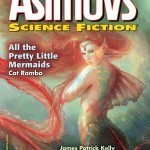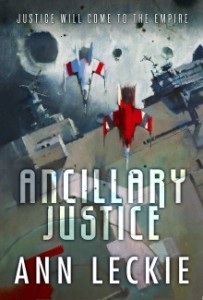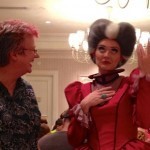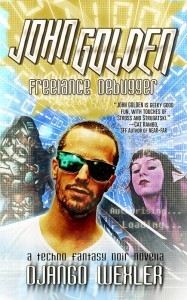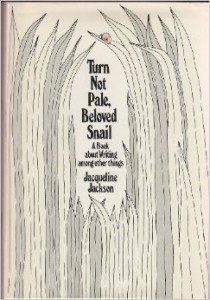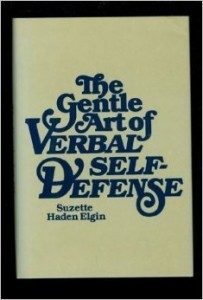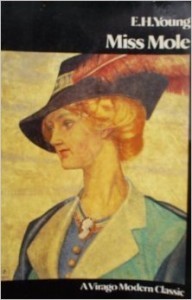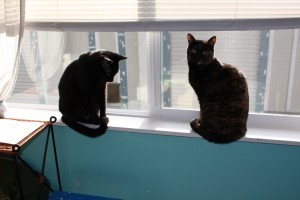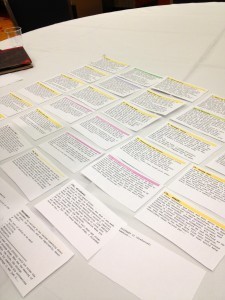Cat Rambo's Blog, page 65
January 27, 2014
On Writing: Have an Impact on the Reader
if you're looking to find some of my recent work, I have a novelette, All the Pretty Little Mermaids, in the March 2014 issue of Asimov's. I've also got a non-fiction interview with Bud Webster in Analog.
This came up in the advanced workshop – how does one grab a reader and have an impact on them? Because surely this sort of emotional identification that makes a reader experience a story as though it were a blow aimed directly at their heart is crucial to the best storytelling. The student pointed at an interview with Yoon Ha Lee in Clarkeworld magazine where she says:I say “assassinate” and it sounds hostile, because it is. I work better when I can think in terms of opponents. The thing is that I don’t want the reader to see the short sharp point clearly from the beginning, but I want it to make sense afterward as the angle of attack. Tactical sense, I guess, in the context of the story’s setup.
Most of the time I write didactically, as if a short story were a proof. There is some object lesson, or ethical question, I want to leave the reader with. ”Ghostweight” is a good example of this; it doesn’t pretend not to be didactic. So when I build the character and their strengths and weaknesses and motivations, when I build the setting, the majority of it needs to be in support of that point. With a proof, you want to include all the necessary axioms and arguments, but leave out the extraneous. A short story is very similar. I am not sure my math professors would approve of the use I am making of my college education, but there it is.
To me this is connected to something Michael Swanwick told my Clarion West class: in a short story, pick your antelope out of the herd and chase it whole-heartedly. If you change course midstream because that other antelope is limping or that other one comes with a garnish, you are likely to have no antelope at all.
So you must determine your antelope, by which I mean, you must figure out what’s the emotional core of the story, what’s its heart? What does it say about the state of existence? And once you know that, you can construct a narrative that grabs the reader through devices like sensory engagement, identification with the main character, and other beguilements until you have them trapped, at which point you force them to confront some fact of existence that may be normally unseen or even actively avoided.
You Should Read This: Ancillary Justice by Ann Leckie
The cover is gorgeous, and conveys a sense of the complicated world of Ancillary Justice.
I must admit to an extra hint of pride in this book’s appearance here, because Ann was a member of my Clarion West class back in 2005, when she was first wowing all of us with her Radchi universe. Ann and I also know each other through SFWA and our shared agent, Seth Fishman.What: Ancillary Justice by Ann Leckie is a fabulous space opera with an unusual protagonist whose struggle will pull the reader in. It is, alas, not a particularly long book, and I could have read at least twice more the length happily.
Who: read this if you like space opera or action-filled but character driven SF. Read it if you want to hear the latest in the ongoing conversation about gendered pronouns held between SF writers for decades now. Read it for the sake of enjoyment and rejoice to know it’s the first of three.
Many writers have an artistic side, and Ann Leckie is no exception. Here's a lovely pink pin she made for me and which is among my treasures.
When: read this when you have time to devour great chunks in one sitting, because otherwise the story will haunt you, will keep calling you back while you are spending time at other tasks, making you remember exactly where you laid the book down, calculating when you can return to it.Why: Read this because it will be appearing on many of the awards ballots this year and rightly so. Read it so you know why you’re voting for it. Read it because it does new and interesting things. Read it because it’s good.
Where/how: This is ideal for a while-away-some-hours situation, depending on your reading speed. Leckie’s world is immersive, intelligent, and interesting.
January 26, 2014
Speculative Reminiscences: Weekly Recap for 1/26/2014
I will say that running for SFWA VP makes me feel a bit more publicly exposed than I usually am. Luckily I have had strong women before me as role models. Here's one of them, Cinderella's Wicked Stepmother.
Here is some of the stuff that appeared on my blog and social media in the week ending 1/26/2014.Stuff I posted on the blog:
I announced I am running for SFWA Vice President. #sfwapro is a tag you’ll be seeing on posts intended to appear on the @sfwaauthors feed as well.
The Women Destroying SF Kickstarter will sponsor my destroying Fantasy if they hit a $35k stretch goal.
I talked about my January writing news and provided a teaser from a still-untitled steampunk piece
Stuff for Writers:
I talked about the demands of collaboration.
Industry discussion of an editor here by Tobias Buckell
How to handle a synopsis when you have a lot of characters
Thoughts on “Do What You Love”.
In the new You Should Read This series, I read:
Writing classic from one of the greats, About Writing by Samuel R. Delany
Classic fantasy novel, The Forest of Forever by Thomas Burnett Swann
Self (and writing) help, The Gentle Art of Verbal Self-Defense by Suzette Haden Elgin
19th century novel of manners, Miss Mole by E.H. Young
Terrific book for MG/YG writers of any age, Turn Not Pale, Beloved Snail by Jacqueline Jackson
I said of this urban fantasy that it had touches of both Stross and Strugatski. Lots of fun. Cover for John Golden, Freelance Debugger, by Django Wexler, from Ragnorak Press.
I blurbed this book by Django Wexler.Time Wasters!
Bad fantasy covers.
A guy singing heavy-metal with his cat.
How the history of civil rights is being retold.
A murmuration of starlings.
Onion piece that hits too close to home.
Zebra finches rocking out.
Interesting Social Media Links:
33 Ways to Get More Pins on Pinterest.
Excellent piece on GoodReads giveaways.
A great response to trolls and nasty commenters.
Kickstarter phrases that pay.
Moving from a blog to G+.
Useful Twitter hashtags for writers.
You Should Read This: Turn Not Pale, Beloved Snail by Jacqueline Jackson
From the introduction by Jacqueline Jackson: "This is a book about a lot of things, all clustered around the idea of writing. I've written it because it's the sort of book I wish someone had written for me. From third grade to seventh I filled dozens of notebooks and a fat briefcase with an assortment of stories and poems, but I never saw a book about writing for kids except textbooks."
This may well be the first writing book I ever read. My grandmother met Jackson at a book festival and had her sign a copy for me. The inscription reads: Then turn not pale, beloved snail, but come and join the dance! Keep up your writing — you’re already choreographing the steps!” I have treasured this book for decades and it still, somewhat improbably, even retains its dust jacket.What: Turn Not Pale, Beloved Snail is a writing book aimed at children. Jackson is an experienced YA adult writer, but this is less about writing for children than it is about being a kid who likes to write.
Who: While this is a great book for the nascent writer in your family, any writer will benefit from Jackson’s insight into what hooks a reader as well as her examinations of her own work.
Why: This book is full of joy in writing, a spirit so strong it can’t help but inform your own.
When: Read this with your kids if they’re thinking about writing. Or read it if you’re thinking about writing something aimed at kids and want to remind yourself what the reading experience is like for them.
Where and how: Read with a pen in hand, if only to jot down the many fiction recommendations Jackson makes (or if you forget, they’re all collected in an appendix.) It’s a reading list that shaped my own middle-grade reading, leading me to L.M. Boston and Tove Jansson, among others. Try the exercises as you go.
January 25, 2014
Teaser from A Still-untitled Steampunk Piece
I'm enjoying writing in a steampunk world. It allows for a lovely texture, and description drawn in a different way than my usual. I'm also enjoying the protagonists who have emerged, particularly Pinkerton agents Elspeth and her companion, Artemus West.
This snippet from the story I’m currently working on is set in the same world as recent pieces “Her Windowed Eyes, Her Chambered Heart” and “So Little Comfort in This World.”Elspeth folded her hands in her lap, trying to keep her brows from knitting. She hated trains.
They were dirty, with bits of smut and coal blown back from the massive brass and aluminum steam engine pulling them along, and engrimed by successions of previous passengers.
They were noisy, from the engine’s howl to the screech of the never-sufficiently-greased axles as they rocketed along the steel rails with their steady pocketa-pocketa-pocketa chug seeping up through the swaying floor.
And they were oppressively full of people, all thinking things, all pressing down on her Sensitive’s mind, making her shrink down into the hard wooden seat as though the haze of thoughts hung like coal-smoke in the air and if she sank low enough, she’d avoid it.
She glanced over at her fellow Pinkerton agent, who returned her look with his own slightly quizzical if impersonal gaze. All of the curiosity of their fellow passengers was directed at him, perhaps the first mechanical being they’d ever seen, with silver and brass skin and curly hair, eyebrows, and moustache of gilded wire.
“They shouldn’t be keeping us back here,” she said for the third time in as many minutes. “If we’re his assigned bodyguards, they should let us up to inspect his compartment.”
“The porter said he’d tell them we were here,” Artemus said in precisely the same tone he’d used the first two times he’d said these words.
You Should Read This: The Gentle Art of Verbal Self-Defense by Suzette Haden Elgin
Elgin identifies eight basic types of verbal violence and the modes for dealing with each one.
This book changed my life. I read it in college, at a time when I was becoming aware of how much could be contained in language. It helped me deal with dysfunctional relationships and it provided strategies for dealing with verbal bullies that I still use on a regular basis. Elgin is also a science fiction writer that I highly recommend, including her book, Native Tongue. I still buy anything I see by Elgin, because I know I’ll end up giving it away.What: The Gentle Art of Verbal Self-Defense helps identify sneaky verbal attacks like back-handed compliments, insults disguised as jokes, and other jabs, as well as providing tactics for dealing with each other.
Who: Read this if you’ve ever felt bullied and didn’t know exactly why. Or if you’ve ever been accused of bullying someone in communication.
Why: Even if you feel totally in command of conversations, this book will help you write better dialogue by showing many of the constructions bullies use, as well as a better understanding of verbal interactions overall.
When: Read this when you’re at your wits end in dealing with a friend, colleague, or anyone else.
Where and how: Keep it handy for frequent reading. If you don’t understand what all the fuss is about, try working through the exercises.
January 24, 2014
You Should Read This: Miss Mole by E.H. Young
From the introduction by Sally Beauman: "This is, at first sight, a very odd book: it has an exceedingly odd, indeed unlikely, heroine, the eponymous Miss Mole, and an exceedingly odd style."
There are some books I go back to over and over again, and this is one of them, because I love the main character so much. Hannah Mole is engaging, delightful, and incredibly sympathetic. I originally found this book because it was a Virago Modern Classic (I found a TON of great reading through Virago, many of which will appear in weeks, months, and hopefully years to come), and it is, unfortunately, out of print nowadays. I sincerely hope it’s reissued sometime.What: Miss Mole is a novel that won the James Tait Black Memorial Prize in 1930. It is set in Radstowe and is, in many ways, a small town novel of manners.
Who: Read this if you love absorbing fiction that deals with small things: not wars or aliens or other monumental matters, but rather cases of crewel yarn gone astray or a pilfered mattress. Read this for characters that come alive and are exemplary of characters who are lovable while still shown with all their flaws.
When: Read this when you want an engrossing read, but also when you want to see the interior life and thoughts of a character conveyed in the most engaging way possible.
Why: Read it because Miss Mole is a heroine outside the norm, because she doesn’t care (or does she) what society says, and because she faces the consequences of past actions with bravery and good spirits.
Where and how: Read this on a rainy day, when you want a love story that is gentle and understated, on a day when you hear the characters’ murmuring in the sound of the falling rain.
Recent Writing News (January 2014)
I have seen the cover for the March issue of Asimov’s, which contains my novelette, “All the Pretty Little Mermaids,” and which even features an illustration drawn from the story, although I don’t know the artist yet. Hurray! That’s the second time I’ve appeared in Asimov’s, and I’m very excited about it. I also have a non-fiction piece appearing in the March Analog, an interview with Bud Webster about his new book, Past Masters and Other Bookish Natterings.
Other stories that should see print in 2014 are: Memphis Barbecue, a southern steampunk story (AIRSHIPS AND AUTOMATONS); dark fantasy story A Brooch of Bone, A Hint of Tooth (BY FAERIE LIGHT); Summer Night in Durham, which involves a tattoo artist, a vampire, and a parking lot confrontation (STAMPS, VAMPS, and TRAMPS); and Hoofsore and Weary, a fantasy story set in a new part of Tabat’s world, the Rose Kingdom (SHATTERED SHIELDS).
January 23, 2014
Platform Statement for SFWA Vice President
I am running for SFWA vice president because I love the organization and think I can do more for it in that position.
Well, the statement’s up in the SFWA forums, so I should probably put it here as well. I am running for SFWA VP. I think I can do a good job. Even if you’re not voting for me, please vote if you’re a SFWA member.Dear SFWA Members:
I am running for Vice President of SFWA.
I joined SFWA in 2005, as soon as I made my first qualifying sale. Among the work I’ve done for SFWA are stints on the Nebula short fiction and Norton juries, work with the Copyright Committee, interviews and articles for the SFWA blog, articles for the SFWA Bulletin, assisting with the YA-SIG’s move to a mailing list, and helping develop guidelines for and moderating the discussion forums. At the time I joined, I was excited and proud to be joining the ranks of so many writers I’ve admired, and I continue to be an enthusiastic advocate for and supporter of SFWA.
I have worked with the current administration and know that I can interact smoothly with it to maintain and continue to build the organization as a valuable resource for speculative fiction writers and one whose members can take pride in their membership. I’m pleased to see SFWA continuing to adapt to changes in the publishing landscape, such as the recent rate increase for SFWA-qualifying markets and the work of the Self-Publishing committee, and hope to lead similar efforts.
As far as my qualifications go, I’ve worked as both a writer and an editor. I have over 100 original short story publications, including in such places as Asimov’s, Weird Tales, and Tor.com, and three collections (two solo, one with Jeff VanderMeer) (for a complete list, see http://www.kittywumpus.net/blog/fiction/). My short story, “Five Ways to Fall in Love on Planet Porcelain,” was a 2012 Nebula nominee, while others have been nominated for the Locus Award and the Million Writers Award. I was the editor for several years of award-winning Fantasy Magazine, receiving a 2012 World Fantasy nomination for my efforts there, and I have multiple editing projects coming up in 2014. I have also worked as a volunteer with both Broad Universe and the Clarion West Writers Workshop. Last year I wrote and self-published Creating an Online Presence, a guidebook for writers trying to navigate the confusing world of online self-promotion, and am currently writing a similar guide on podcasting with Folly Blaine, the podcast manager of Everyday Fiction. I teach a popular series of online classes on writing and editing and do some podcast narration. I am a frequent convention-goer and make a point of participating in SFWA activities when they’re available at such gatherings. This year, I will be attending Norwescon, the Nebula Award ceremony, the Locus Awards, and Worldcon, with tentative plans for a couple of other conventions.
My priorities as a board officer include:
Building SFWA’s name and influence by reaching out to both established and newer F&SF writers who have not joined but would find it useful. I’d like to see SFWA’s social media presence continue to expand and to work to interest and intrigue potential members.
Preserving SFWA’s institutional memory through archives and collecting existing information.
Improving the existing volunteer structure in order to more effectively connect volunteers with SFWA’s needs, as well as recognizing and rewarding volunteers more consistently.
Assisting SFWA as it determines qualifications for self-published writers as well as how it can best serve such writers.
Working to address internal miscommunications by better communicating what the board is doing and how people can assist in such efforts. I’d like to help current volunteers and SFWA officers tell other members what they do.My primary role as VP, though, would be to support SFWA’s President. To assist me in that role, I’ve got good people skills, a sense of humor, and the fact that I don’t take myself overly seriously. I will continue to represent SFWA with enthusiasm and the respect such an august organization deserves.
Currently I am head moderator of the SFWA discussion forums. To avoid a potential conflict of interest, I have asked the other moderators to oversee the election subforum. Over the last six months, I’ve been recruiting new moderators and working out processes so someone else can take my place, should I be elected. As VP, I would continue to work with the moderating team to help make the transition as smooth as possible.
Sincerely,
Catherine (Cat) Rambo
On Writing: Collaboration
One of the most interesting things about a collaboration is a chance to see your collaborator's process in action. Here are the story cards for "Haunted," which Bud brought with him to WorldCon so we could grab a table in the green room and go over them.
Collaborations can be a lot of fun. My first collaboration came about when Jeff VanderMeer asked if I’d be interested in working together on one and tossed me a 1500 word lump that would end up becoming “The Surgeon’s Tale.” That story remains among one of my favorite pieces of writing, in part because reading back through it evokes the pleasure of batting it back and forth, adding thousand or so word chunks each time, until it ended up in the land of the novelette. I think we managed to make the final result pretty seamless – I have trouble remembering who wrote some bits, although others stand out clearly in my head as Jeff’s or mine, because I remember first reading them or spinning them out.I haven’t done that many. “Logic and Magic in the Time of the Boat Lift” with Ben Burgis resulted from Ben describing what he wanted to write a story about — Miami and were gators and coke dealers — at more than one Wiscon. I wrote the beginning and sent it his way, and the back and forth began. Now we’ve got a similar lump in process.
Gio Clairval and I just finished up a flash piece recently. One of the things I’ve done to encourage collaborations is stick a bunch of word lumps up in a Google doc and just shared the doc so people could take a look and see if anything sparked. She liked a piece I’d done based on an image of a female acrobat.
Right now Bud Sparhawk and I just finished the novella “Haunted,” which started as a short story and kept growing and growing and growing. Bud plots things out a bit more thoroughly than I do, and it’s been interesting so far. Here we worked in Scrivener and laid out a story arc in cards before really setting to writing. I enjoyed it, because I think we’ve got a killer idea, and some clever twists, and some things that will hit nostalgic sweetspots.
So here’s my advice on collaboration based on my experience, which is somewhere past utterly new at it and yet not in the range of people like Marion Zimmer Bradley, Mercedes Lackey, Andre Norton, Mike Resnick, and countless more.
Pick a collaborator whose speed (roughly) matches yours. Bud was writing faster on ours, and I know there were several times where I was the holdup. Too much of that can get frustrating, as I’m sure he can attest.
Pick a collaborator who doesn’t take things too seriously (and don’t do that yourself). If someone has got something (real or imagined) at stake, the pressure may be uncomfortable.
Pick a collaborator who is flexible, and similarly be prepared yourself to sacrifice cherished ides, because you can always use them elsewhere.
Collaborative benefits include (for me, at least) new energy, someone to discuss a story with as it’s written, new insights into process, fresh ideas, and a kick in the butt to be productive.

